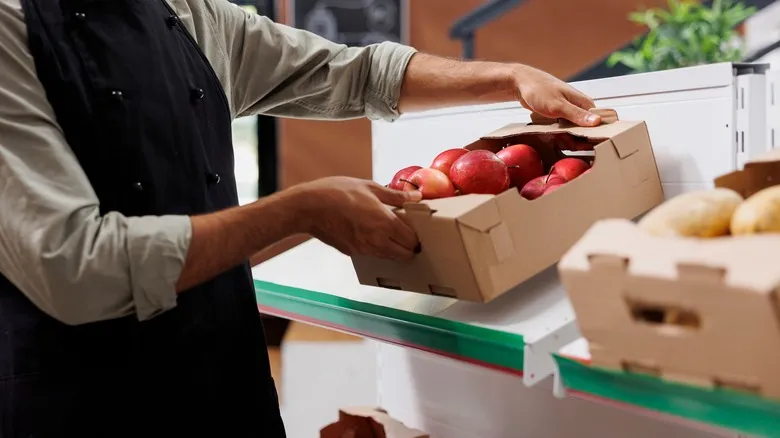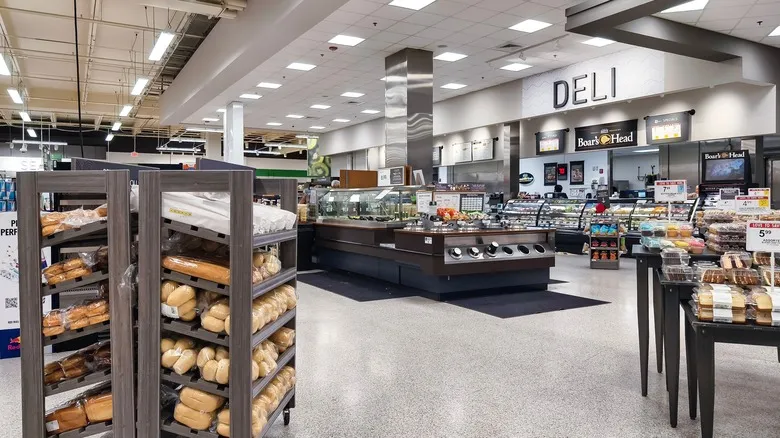The rise of the grocery store

Before the emergence of self-service grocery stores such as Piggly Wiggly, the process of food shopping was significantly more complex. Customers did not wander through aisles or select items on their own; instead, they provided a list to a store clerk, who would retrieve the requested items from behind the counter. Specialty grocers were also prevalent, with shoppers visiting different shops for meats, baked goods, or fresh produce. This outdated system made grocery shopping time-consuming and often led to higher prices, as stores had limited space to stock a wide variety of products. The experience was far from convenient, as customers depended on store staff to choose everything from canned goods to fresh produce.
The introduction of the self-service model in the early 1900s represented a significant shift, not only accelerating the shopping process but also enabling stores to offer a broader selection of products. Shoppers could soon visit their favorite deli counter and butcher, as well as browse the dairy aisle of their grocery store, all in one trip, transforming what used to be an all-day affair. While Piggly Wiggly is recognized as the first self-service store, other similar concepts were emerging around the same time. Supermarkets quickly gained traction, creating a blend of different store types. Today, grocery stores primarily concentrate on food items, with a limited assortment of non-food products. Some, like Aldi and Trader Joe's, focus mainly on store-brand items to keep prices low, while higher-end specialty grocers often feature more expensive niche products.
Supermarkets and the quest for convenience

The 1930s marked the emergence of supermarkets, with Publix establishing itself as a key grocery provider in the South and numerous other companies launching stores nationwide. These supermarkets not only provided an extensive range of grocery products but also expanded into various non-food items, enhancing convenience for shoppers. Designed to simplify the shopping process, these stores offered a comprehensive one-stop shopping experience, featuring everything from fresh meats and cheeses to canned goods, cleaning supplies, and even small appliances all in one location. This transformation not only changed the shopping experience but also set the stage for the contemporary retail environment, where larger stores began to overshadow smaller specialty shops. With their spacious layouts and diverse inventories, supermarkets made shopping more efficient and accessible, fundamentally altering how we purchase food.
Today’s supermarkets go beyond merely offering a wide array of food and products. With tens of thousands of items available, they emphasize competitive pricing, store brand selections, and customer-friendly features such as apps and loyalty programs. They also enhance the in-store experience with amenities like music, prepared meals, and, in some cases, childcare, cooking classes, and dining options. Larger than ever, supermarkets balance convenience with experience, providing everything from groceries to home goods and transforming shopping into a more engaging and strategic experience for consumers.
At the end of the day, the distinction doesn't really matter

The main distinction between grocery stores and supermarkets lies in their selection, but this difference often goes unnoticed by shoppers. Many people use the terms interchangeably and choose their stores based on factors such as location, pricing, variety, and convenience. Most shoppers don’t limit themselves to just one store; on average, they visit two different locations each week. Customers are nearly as likely to shop at a grocery store as they are at a supermarket, and many also frequent specialty grocers or dollar stores, in addition to utilizing grocery delivery or pickup services.
Despite the numerous changes over the last century, grocery shopping remains a vital aspect of our daily lives. With the advent of online shopping and delivery apps, it’s now possible to avoid physical stores altogether. Nevertheless, the majority of grocery shopping still occurs in person, prompting retailers to prioritize the in-store experience. This emphasis is a direct result of the initial transition from full-service to self-service stores, followed by the emergence of large-scale supermarkets. Each evolution in store design and shopping experience, from small neighborhood convenience stores to expansive supermarkets, continues to influence our shopping habits today. Physical stores remain integral to our lives, even with the convenience offered by online options.
Recommended

What Makes Falafel Different From Ta'ameya?

The 5 Ingredients You'll Need For Indiana's State Pie

Italy's Mozzarella In Carrozza Sandwich Is Like A Grown-Up Cheese Stick

What Exactly Is A Bismark Donut?
Next up

